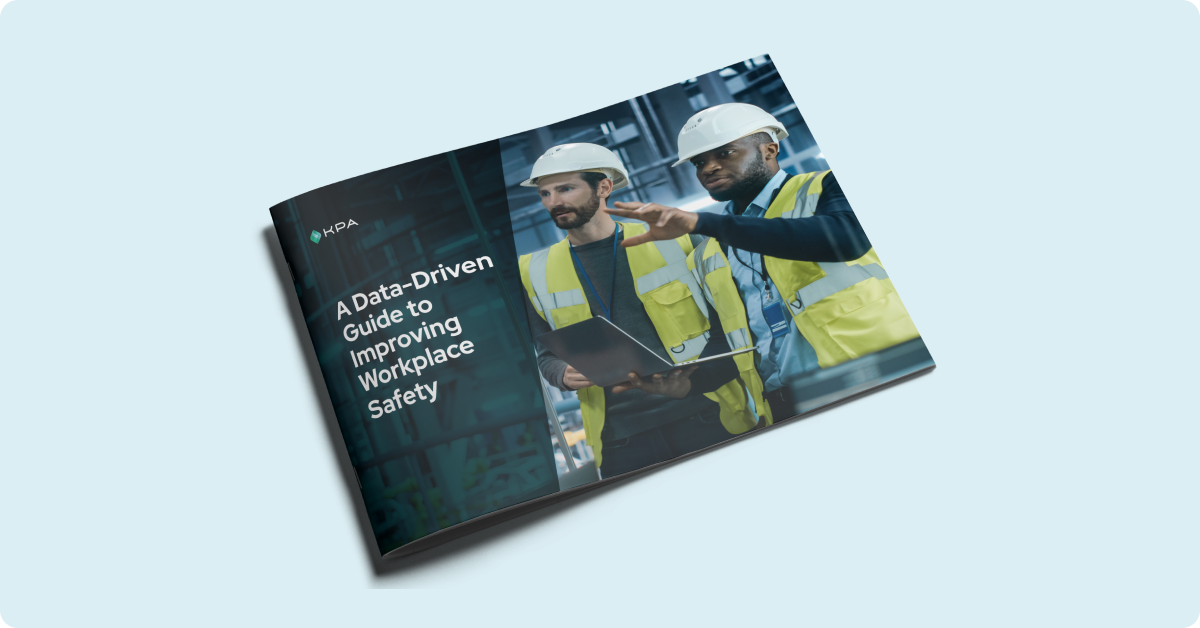It is crucial to choose the right key performance indicators (KPIs) for your safety program. And while there are myriads of data points you could track, you can’t track everything. Let’s look at how you can establish KPIs that align with your safety program objectives, and avoid unintended consequences that could harm your organization.
KPIs are specific measurements that help organizations track their performance and determine whether they are achieving their safety goals or not. These are the specific measurements that tell the story of how your safety program is performing. Let’s take a look at the importance of KPIs in establishing a successful safety program and explore some of the common KPIs that organizations use to measure their safety performance.
Choosing the Right KPIs for Your Safety Program
As a safety organization, it’s important to understand that reducing losses is not the only goal. There are various measurements, objectives, and goals that you need to achieve to ensure safety. Achieving this goal requires several steps and other key measurements that play a crucial role.
Here are some common safety KPIs
- TRIR
- DART
- LTIFR
- Severity
- OSHA Recordables
- Worker Participation
- Corrective Action Completion Velocity
- Employee Training Completion
- Number of CAPAs
- Number of Near Misses Reported
- Leading Indicators
- Lagging Indicators
- Number of Safety Observations
- Number of JHA Completions
- Number of Toolbox Talks
- Workers Comp Claims
- Safety Violations
- Equipment Breakdowns

A Data-Driven Guide to Improving Workplace Safety
Download this eBook to learn the different types of safety data and best practices for using data and analytics to improve your safety program.
Many of these are KPI’s you’re tracking today because they’re regulatory requirements. You’re probably tracking your OSHA recordables. You’re probably capturing your TRIR.
But can you go deeper than that?
- Are you looking at different performance measurements to capture things like how involved your workforce is? Are you measuring worker participation?
- Are you looking at corrective actions? And are these being closed out? How many of our incidents result in corrective action?
- Are you looking at leading versus lagging indicators?
- Are we tracking things beneath the surface of near misses reported, and safety observations reported? Are we getting more proactive?
Focus on aligning your objectives and finding ways to set the right metrics as an organization.
It is important to ensure that your metrics are smart and that you have a balanced mix of leading and lagging indicators. Additionally, we should not only track reactive measurements but also have some proactive measurements in place, as safety is a crucial aspect that requires a comprehensive approach.
There’s a lot we could be tracking. But we can’t track everything.
We need to have some key goals that align with our objectives. That will help us determine what KPIs are right for the organization. Choose less than ten KPIs for your organization that align with your objectives.
We’ve probably all heard this quote before:
“What gets measured gets managed…”
This is a quote by Peter Drucker, a business management theorist who’s written over thirty-nine books and publications. This is part of that quote that we all remember, but it’s the second half of this famous line or quote that often gets overlooked.
“What gets measured gets managed — even when it’s pointless to measure and manage it, and even if it harms the purpose of the organization to do so.”
Not everything that we can measure matters. In fact, what we measure can lead to unintended results. The wrong metrics can lead to unintended consequences.
The Cobra Effect on Safety Programs
There’s a great historical example that illustrates this point. In the early 1900s, when British colonials ruled India, they had a major problem with venomous snake bites from cobras.
So, they offered a bounty for every dead cobra in Delhi. Enterprising individuals started up cobra farms, breeding cobras to capitalize on the bounty. When the government became aware of this, they canceled the bounty program which resulted in the cobras being released or let loose into the streets as they were now worthless without the bounty system.
This led to completely unintended results, a significant increase in cobras when the intention was to reduce the cobra population. This is a great example of “what gets measured gets managed.” When we offer an incentive to do something, the opposite of that result could actually happen.
Tying this back to health and safety programs, many organizations see this cobra effect when measuring days without an accident.
How could that lead to an unintended result? Well, days without an accident is tracking a number: we’ve had so many days without an accident. We get this incentive if we hit a hundred days. Well, our workforce wants that carrot.
But, let’s think about the behaviors this may encourage: the main behavior being under-reporting. I might get hurt. I might have a cut, maybe a sprained ankle. But I’m going to tough it out because I don’t want to be the one that impacts not getting that carrot, and turning our date tracker back to zero days without an accident. So, unintended result.
We want to encourage reporting. We want to encourage participation in the safety program. It’s important to set the right expectations, goals, and metrics so that we can measure the things that actually matter.
Before You Set Your Safety Program KPIs, Identify Your Objectives
Before we can identify the KPIs that are right to track for our organization, ask yourself this question: What are you trying to achieve? Here are a few scenarios to consider:
We want to reduce lost time incidents
We’re having a major issue with the severity of accidents resulting in people being away from work. We want to reduce that by X percent.
We want to increase training completion.
We’ve had an issue with training compliance, which resulted in an audit, and people not understanding safety practices. We want to increase that training per participation and completion by a certain percentage.
We want to increase participation.
We want to increase reporting. We want inspections to be done. We want near misses to be reported, and participation in the overall safety program. There are many different metrics we can track to evaluate participation.
We want to improve leadership visibility.
We’ve identified that leadership is not involved in our safety program. Maybe that’s because they don’t know what to be tracking. They don’t know how we’re doing. Are we making this information accessible to them?
We want to reduce regulatory citations.
We’ve received citations from different regulatory bodies, and we want to focus on those key areas. Like, doing workplace exams.
Narrowing in on your safety program objectives makes it easier to identify the metrics to watch to understand if you’re moving the needle.
That’s all for this week, but not all we’re going to cover on this incredibly important topic. Now that we’ve discussed how to choose the KPIs that are right for your organization, we’ll dive next into getting started with measurement and putting your data to work.
Monitoring Safety Program KPIs is easier with solid EHS software in your team’s hands.
KPA simplifies data visualization and reporting, giving users easy access to actionable insights into their EHS program performance. Your data is presented in real-time, so no delay or extra steps are required to access the information. The dashboards are configured based on features tailored to your business’s unique requirements, giving you the power to make informed decisions that impact workplace safety.
Let KPA show you how to take a data-driven approach to safety.
Related Content
Explore more comprehensive articles, specialized guides, and insightful interviews selected, offering fresh insights, data-driven analysis, and expert perspectives.

